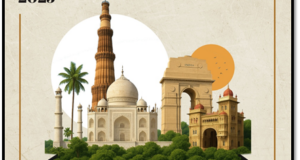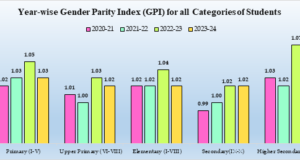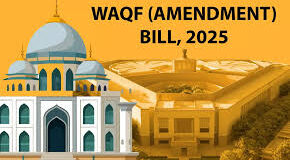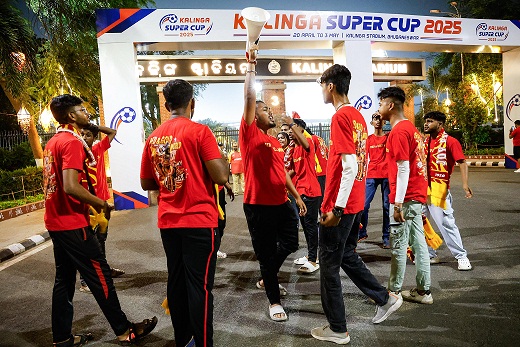“Manpower without Unity is not a strength unless it is harmonized and united properly, then it becomes a spiritual power”
-Sardar Vallabhbhai Patel
Overview
Every year, on October 31, India observes National Unity Day, also known as Rashtriya Ekta Diwas. This significant day commemorates the birth anniversary of Sardar Vallabhbhai Patel, a pivotal figure in India’s struggle for independence and the first Deputy Prime Minister and Home Minister of India. Renowned for his exceptional leadership and unyielding commitment to national integration, Sardar Vallabhbhai Patel is fondly remembered as the “Iron Man of India.” National Unity Day serves as a reminder of his efforts to unite the diverse princely states into a single nation and fosters a spirit of solidarity among the people of India.
Sardar Vallabhbhai Patel: A visionary leader
Sardar Vallabhbhai Patel was born on 31st October 1875 in Nadiad, Gujarat. A successful lawyer by profession, his life encountered a turning point when Mahatma Gandhi chose him as his deputy commander to lead the Kheda Satyagraha in 1918. Thus, as the leader of a peasants’ protest, he found the trajectory of his life turning towards a path of public service. In 1924, he was elected President of the Ahmedabad Municipal Board. Taking charge, he revamped the drainage, sanitation, cleanliness and water distribution systems of Ahmedabad. To their sheer awe, the citizens witnessed the President of the Board taking up a broom and dust cart himself, and cleaning the Harijan quarter of the city. In him, the city of Ahmedabad found a new hero.
Sardar Vallabhbhai Patel became increasingly involved with the struggle for independence. It was his role in the Bardoli Satyagraha of 1928 that elevated him to a new pinnacle of national glory. The peasant movement that became a subject of great discussion across the nation demonstrated Sardar Vallabhbhai Patel’s organizational capacity and enthusiasm for tireless action. It was here that he earned the title of ‘Sardar’, the fond epithet by which he continues to be remembered and revered. Sardar Vallabhbhai Patel went on to become one of the foremost pillars of the national struggle for freedom.
At the time of Independence, India consisted of British India and the Princely States. There were 17 British Indian provinces, and the Princely States- comprising about two fifths of the geographic territory of the country- numbered more than 560. While the Indian Independence Act ceded control of British India to the Indian Government, rulers of the Princely States were given the option to decide whether they wanted to accede to India or Pakistan or neither. Sardar Vallabhbhai Patel stepped in to ensure the accession of the princely states and integrate them into the Union of India. On 15 August 1947, Sardar Vallabhbhai Patel took oath as the first Deputy Prime Minister, as well as the first Home Minister of independent India. He also took charge of the Information and Broadcasting Ministry.
|
Sardar Vallabhbhai Patel at a Press Conference on Integration of States |
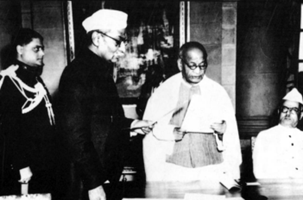
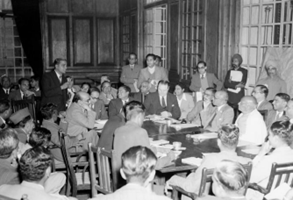
National Unity Day serves as a reminder of the values that Sardar Vallabhbhai Patel embodied: unity, integrity, and inclusiveness. In a country as diverse as India, with myriad cultures, languages, and religions, fostering a sense of unity is essential for national progress. The day encourages citizens to reflect on the importance of coming together to overcome challenges, celebrate diversity, and promote harmony. The celebration of National Unity Day is marked by various events and activities across the country. Government institutions, schools, and colleges organize a number of events to spread awareness about the importance of unity. One of the key highlights of the day is the Run for Unity, a nationwide marathon held to honor Sardar Vallabhbhai Patel’s vision of a united India.
To mark the 10th National Unity Day, the Union Minister of Home Affairs and Cooperation, Amit Shah flagged off the ‘Run for Unity’ on 29th October, 2024 organized in New Delhi. Initiated as a call for solidarity in 2015, the Run for Unity symbolizes a pledge not only for national cohesion but also for a progressive, developed India, embodying the vision of a united and prosperous future.
10th National Unity Day
As part of the celebrations, Prime Minister Narendra Modi will inaugurate and lay the foundation stone of various infrastructural and development projects worth over Rs 280 crore in Ekta Nagar (Kevadia), situated in the Narmada district of Gujarat. These projects aim to enhance the tourist experience, improve accessibility and support sustainability initiatives.
On 31st October, Prime Minister will participate in the Rashtriya Ekta Diwas celebrations and offer floral tribute to Sardar Vallabhbhai Patel. He will administer the Ekta Diwas pledge and witness Ekta Diwas Parade which will comprise of 16 marching contingents from 9 States and 1 UT Police, 4 Central Armed Police Forces, NCC and a marching band. Special attractions include Hell March contingent of NSG, daredevil show by BSF and CRPF women and men bikers, a show on combination of Indian Martial Arts by BSF, piped band show by school children, ‘Surya Kiran’ flypast by Indian Air Force, among others.
Statue of Unity
October 31st, 2018, marked the inauguration of the world’s tallest statue – the Statue of Unity, against the backdrop of the breathtaking Satpura and Vindhyachal hills at Kevadia, Gujarat. The 182-metre (600 feet approx.) statue is dedicated to Sardar Vallabhbhai Patel, the architect of independent India. The colossal monument towers over River Narmada & overlooks the vast surrounds and the river basin of the Narmada River and the sprawling Sardar Sarovar dam. It stands on the Sadhu Bet hillock, connected by a 300-metre bridge, which offers access from the mainland to the statue.
The Statue of Unity offers a range of captivating attractions, making it a premier destination for both cultural and eco-tourism. Visitors can enjoy the nightly Laser Light and Sound Show, which illuminates the statue and narrates Sardar Vallabhbhai Patel’s legacy. The scenic Valley of Flowers, featuring over two million plants, and the iconic Sardar Sarovar Dam, the second largest gravity dam worldwide by concrete volume, are must-visit sites. For an immersive natural experience, Panchmuli Lake offers a tranquil boat ride surrounded by lush greenery. Other highlights include the Cactus Garden, showcasing desert flora, and Ekta Nursery, where guests can purchase plants as a symbol of unity. Children’s Nutrition Park and the Dino Trail provide engaging educational experiences, while the Jungle Safari and Vishwa Van global forest celebrate biodiversity with diverse plant and animal species, adding to the uniqueness and diversity of this
|
Statue of Unity |
remarkable site.
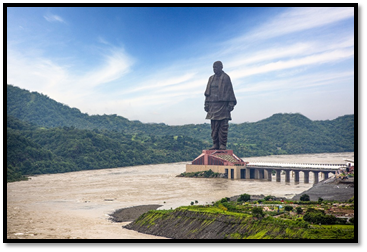
Conclusion
National Unity Day is not just a day of remembrance; it is a call to action for every citizen to embrace the spirit of oneness. In a world that often seems divided, the values championed by Sardar Vallabhbhai Patel remain more relevant than ever. As we celebrate this day, let us commit ourselves to building a united and harmonious society, honoring the legacy of the Iron Man of India by fostering an environment where diversity is celebrated, and unity is cherished. Together, we can strive towards a brighter future for our nation, rooted in the principles of integrity, respect, and solidarity.
References:
https://pib.gov.in/PressNoteDetails.aspx?NoteId=150833&ModuleId=3®=3&lang=1
https://www.pmindia.gov.in/en/news_updates/pm-to-visit-gujarat-on-30-31-october-2/?comment=disable
https://pib.gov.in/PressReleasePage.aspx?PRID=2069106
https://www.gujarattourism.com/central-zone/narmada/statue-of-unity.html
https://pib.gov.in/PressReleasePage.aspx?PRID=2069106
 Odisha news today, Latest Oriya News Bhubaneswar Online Odia news Portal
Odisha news today, Latest Oriya News Bhubaneswar Online Odia news Portal

